
The Enchanting Black Sea Coast of Ukraine
Discover the enchanting Black Sea Coast of Ukraine, where golden beaches, vibrant cities, and rich cultural heritage await you.
The Black Sea Coast of Ukraine is a hidden gem, offering a mesmerizing blend of natural beauty, cultural richness, and historical significance. Stretching along the southern border of Ukraine, this picturesque coastline is adorned with golden beaches, lush landscapes, and charming coastal towns. From the bustling port city of Odesa to the serene beaches of Zatoka, the Black Sea Coast provides a perfect escape for those seeking both relaxation and adventure. Odesa, often referred to as the 'Pearl of the Black Sea,' is a vibrant city known for its stunning architecture, lively nightlife, and rich cultural heritage. The famous Potemkin Stairs, a symbol of the city, offer a breathtaking view of the harbor, while the Odesa Opera House stands as a testament to the city's artistic legacy. Visitors can explore the city's unique catacombs, enjoy a stroll along Deribasovskaya Street, or relax on the sandy shores of Arcadia Beach. Further along the coast, the resort town of Zatoka beckons with its tranquil beaches and family-friendly atmosphere. Known for its crystal-clear waters and soft sandy shores, Zatoka is a popular destination for sunbathing, swimming, and water sports. The town also hosts a variety of festivals and events throughout the summer, making it a lively spot for visitors of all ages. Nature enthusiasts will find paradise in the Danube Delta, a UNESCO World Heritage Site located in the southwestern part of the coast. This unique ecosystem is home to a diverse array of wildlife, including rare bird species and lush vegetation. Guided boat tours offer an immersive experience of the delta's pristine beauty, providing a chance to witness its rich biodiversity up close.
Local tips in Black Sea Coast
- Visit Odesa in late spring or early autumn to avoid the peak tourist season and enjoy pleasant weather.
- Explore local cuisine, especially seafood dishes, at coastal restaurants for an authentic taste of the region.
- Consider taking a guided tour of the Odesa catacombs for a fascinating glimpse into the city's underground history.
- Bring sunscreen and sun protection, as the summer sun can be quite strong along the coast.
- Check the festival calendar in Zatoka to time your visit with local events and celebrations.
- Book a boat tour in advance to explore the Danube Delta, especially during peak seasons.
The Enchanting Black Sea Coast of Ukraine
The Black Sea Coast of Ukraine is a hidden gem, offering a mesmerizing blend of natural beauty, cultural richness, and historical significance. Stretching along the southern border of Ukraine, this picturesque coastline is adorned with golden beaches, lush landscapes, and charming coastal towns. From the bustling port city of Odesa to the serene beaches of Zatoka, the Black Sea Coast provides a perfect escape for those seeking both relaxation and adventure. Odesa, often referred to as the 'Pearl of the Black Sea,' is a vibrant city known for its stunning architecture, lively nightlife, and rich cultural heritage. The famous Potemkin Stairs, a symbol of the city, offer a breathtaking view of the harbor, while the Odesa Opera House stands as a testament to the city's artistic legacy. Visitors can explore the city's unique catacombs, enjoy a stroll along Deribasovskaya Street, or relax on the sandy shores of Arcadia Beach. Further along the coast, the resort town of Zatoka beckons with its tranquil beaches and family-friendly atmosphere. Known for its crystal-clear waters and soft sandy shores, Zatoka is a popular destination for sunbathing, swimming, and water sports. The town also hosts a variety of festivals and events throughout the summer, making it a lively spot for visitors of all ages. Nature enthusiasts will find paradise in the Danube Delta, a UNESCO World Heritage Site located in the southwestern part of the coast. This unique ecosystem is home to a diverse array of wildlife, including rare bird species and lush vegetation. Guided boat tours offer an immersive experience of the delta's pristine beauty, providing a chance to witness its rich biodiversity up close.
When is the best time to go to Black Sea Coast?
Iconic landmarks you can’t miss
Potemkin Stairs
Explore the breathtaking Potemkin Stairs in Odesa, a historic landmark connecting the city to the Black Sea, offering stunning views and rich cultural heritage.

Golden Gate
Discover the Golden Gate of Kyiv, an architectural masterpiece symbolizing the city's rich history and vibrant culture, perfect for every traveler's itinerary.

Kiev Pechersk Lavra
Discover the spiritual heart of Ukraine at Kiev Pechersk Lavra, a UNESCO World Heritage site steeped in history and breathtaking architecture.

Yalta, Naberezhnaya
Experience the stunning views and rich culture of Yalta's Naberezhnaya, a vibrant waterfront promenade along the Black Sea.

Ukrainian Motherland Monument
Explore the Ukrainian Motherland Monument, a monumental tribute to resilience and history, offering stunning views and deep cultural insights in Kyiv.

Black Sea
Experience the beauty and charm of the Black Sea, where stunning beaches meet rich culture and vibrant local life.
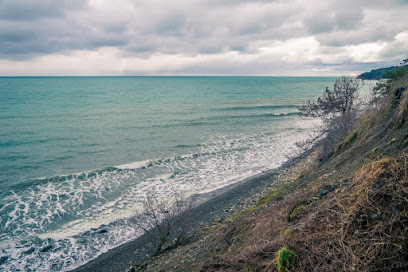
Mirror Stream
Discover the beauty of Mirror Stream, a captivating fountain in Kharkiv that offers a serene escape and stunning views for every traveler.

St. Sophia's Cathedral
Discover the architectural brilliance and historical significance of St. Sophia's Cathedral, a UNESCO World Heritage site in the heart of Kyiv.

Gorodetsky House
Explore the enchanting Gorodetsky House in Kyiv, a historical landmark showcasing unique architecture and intricate sculptures that tell tales of the past.

Bohdan Khmelnytsky Monument
Explore the Bohdan Khmelnytsky Monument in Kyiv, a striking symbol of Ukrainian history and culture, set in a vibrant landscape rich with heritage.

Chorne Sea
Discover the enchanting beauty of Chorne Sea – a perfect blend of adventure and relaxation along the mesmerizing Black Sea coast.
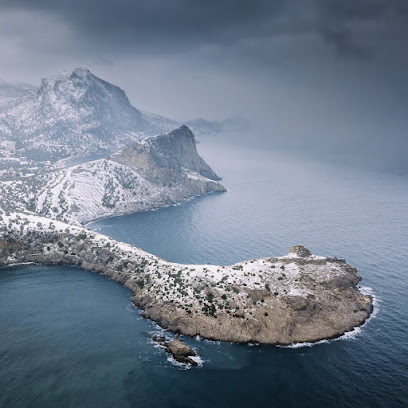
Odesa Museum of Western and Eastern Art
Explore the Odesa Museum of Western and Eastern Art, a cultural haven showcasing a rich collection of artistic treasures from across the globe.

Rozumovskyi Palace
Explore the enchanting Rozumovskyi Palace, a historical gem in Baturyn, Ukraine, surrounded by stunning gardens and rich cultural heritage.

Independence Monument
Discover the Independence Monument in Kyiv, a historic landmark symbolizing freedom and the vibrant heart of Ukraine's culture.

Danube Biosphere Reserve
Discover the breathtaking beauty and biodiversity of the Danube Biosphere Reserve, a UNESCO World Heritage Site in Ukraine's Odesa Oblast.

Unmissable attractions to see
Cape Fiolent
Discover the breathtaking beauty of Cape Fiolent, a stunning nature preserve near Sevastopol offering cliffs, azure waters, and rich biodiversity.

Tuzlovski Lagoons National Park
Explore the tranquil beauty and rich biodiversity of Tuzlovski Lagoons National Park in Odesa Oblast, a perfect retreat for nature lovers and adventure seekers.

Domus Solis (house of the sun, door of the sun, door on the beach of Langeron)
Experience the beauty of Domus Solis, Odesa's iconic beach destination, where relaxation and rejuvenation await under the sun.

Dzharylhach
Discover the untouched beauty of Dzharylhach Island, a serene getaway in Kherson Oblast with pristine beaches and rich biodiversity.

Oleshky Sands
Discover the enchanting beauty of Oleshky Sands, Ukraine’s largest desert, a paradise for nature lovers and adventure seekers in Kherson Oblast.

Poseidon
Experience the thrill of water attractions at Poseidon, a premier destination on the Black Sea, offering fun and relaxation for all ages.

Essential places to dine
Kryivka
Experience authentic Ukrainian cuisine at Kryivka in Lviv - where history meets flavor in a unique underground setting.

Meat and Justice
Experience top-notch grilling at Meat and Justice in Lviv - where every bite is a celebration of flavor and tradition.
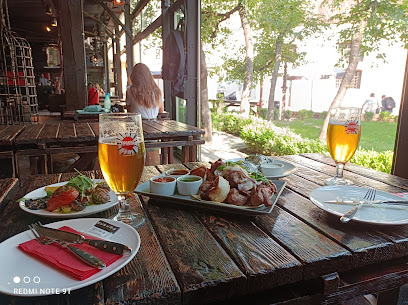
Mama Manana
Discover authentic Georgian flavors at Mama Manana in Kyiv - a delightful culinary experience awaits every visitor.

Dacha
Discover the essence of Ukrainian cuisine at Dacha in Odesa - where tradition meets modern culinary artistry.

Berth №1
Discover family-friendly dining at Berth №1 in Odesa—where delicious meals meet breathtaking sea views.

KANAPA restaurant
Savor the essence of Ukraine at Kanapa Restaurant – where tradition meets taste in the heart of Kyiv.

O'panas
Experience authentic Ukrainian cuisine at O'panas in Kyiv – where tradition meets modern taste in a charming setting.

Hutorets na Dnipri
Experience authentic Ukrainian cuisine at Hutorets na Dnipri, where stunning river views meet exquisite dining in Kyiv.

Varburger
Experience gourmet burgers like never before at Varburger, Dnipro's top gastropub blending quality ingredients with a vibrant atmosphere.

Borsh
Experience authentic Ukrainian cuisine at Borsh in Lviv—where tradition meets taste in a charming setting.

Kinza
Discover authentic Georgian flavors at Kinza in Odesa, where tradition meets culinary excellence.

The Most Expensive Galician Restaurant
Experience authentic Galician cuisine in an elegant setting at Lviv's most luxurious restaurant, where every meal is a celebration of flavor.

Corvin
Discover the vibrant flavors at Corvin - where Ukrainian tradition meets modern dining in the heart of Odesa.

Tres Francais
Savor authentic French cuisine at Tres Francais - where tradition meets modern elegance in Kyiv's vibrant culinary scene.

Pesto Cafe
Experience authentic Italian cuisine at Pesto Cafe in Kyiv—home of delicious pizzas and a warm atmosphere perfect for any occasion.
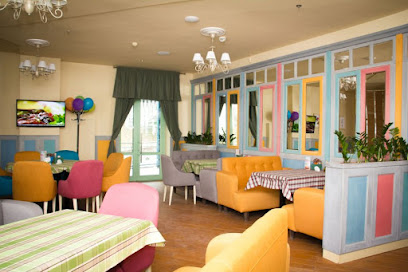
Markets, malls and hidden boutiques
Ocean Plaza
Discover Kyiv's Ocean Plaza, a modern shopping mall offering diverse retail, dining, and entertainment experiences in a vibrant atmosphere.
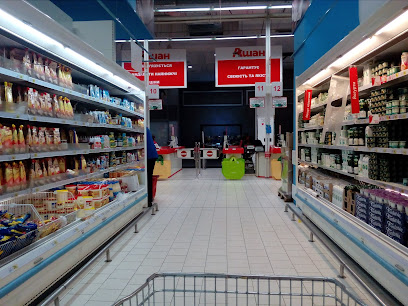
Auchan Кільцева
Discover a vibrant shopping hub at Auchan Кільцева in Kyiv, offering local delicacies, international brands, and a unique cultural experience.

Auchan Сокільники
Explore Auchan Сокільники in Lviv Oblast for a comprehensive shopping experience featuring local and international products, all under one roof.

Auchan Чернігівська
Explore Kyiv's Auchan Чернігівська, a hypermarket that offers a rich selection of fresh food, dairy delights, and a taste of local culture.

Auchan Sosninykh
Experience the vibrant shopping culture at Auchan Sosninykh in Kyiv, where local flavors and international goods meet.

Rost Malyshevsʹkyy
Explore local flavors and international goods at Rost Malyshevsʹkyy, a vibrant supermarket in Kharkiv that caters to all your shopping needs.

Auchan Житомир
Explore Auchan Zhytomyr, a hypermarket rich in local flavors and diverse products for the savvy traveler.

Ashan
Experience the best of shopping at Ashan, Dnipro's premier hypermarket, offering fresh produce, clothing, and unique local products all in one place.

Велмарт
Explore Velmart in Kyiv: Your ultimate hypermarket for fresh produce, local specialties, and everyday essentials, all in one vibrant shopping destination.

Rost Palats Sportu
Explore the vibrant shopping scene at Rost Palats Sportu, Kharkiv's leading hypermarket, offering local and international products for every taste.

Auchan Глушкова
Experience the vibrant shopping scene at Auchan Глушкова in Kyiv, where local flavors and international goods come together in an exciting hypermarket.

Ashan Hypermarket
Explore Ashan Hypermarket in Chernivtsi for a unique shopping experience with a variety of groceries, clothing, and local products at affordable prices.

Auchan Рів Ґош
Experience the vibrant shopping culture of Kyiv at Auchan Рів Ґош, where you can find fresh produce, local products, and more.

Auchan
Explore Kyiv's Auchan: A bustling supermarket offering a wide selection of local and international products, perfect for every traveler.

Ukrainian Collection
Explore the essence of Ukrainian culture through unique gifts and handcrafted treasures at the Ukrainian Collection in Boryspil Airport.

Essential bars & hidden hideouts
Fabrika.space
Discover the vibrant atmosphere of Fabrika.space, Kharkiv's premier live music bar and conference center, where culture and entertainment meet.

Gambrinus
Discover the culinary delights of Gambrinus, where traditional Ukrainian flavors meet a vibrant atmosphere in the heart of Odesa.

Barman Dictat
Explore the vibrant nightlife of Kyiv at Barman Dictat, where cocktail artistry meets a chic atmosphere for an unforgettable experience.
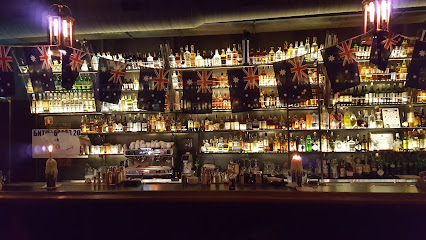
Varburger
Discover the vibrant flavors of Dnipro at Varburger, a top-rated gastropub offering delicious meals and a lively atmosphere.

Corvin
Experience the vibrant nightlife of Odesa at Corvin, a lively pub and restaurant offering delicious food and a vast drink selection.

Buena Vista
Discover the vibrant fusion of Cuban flavors and nightlife at Buena Vista, a must-visit bar and restaurant in Kyiv's Shevchenkivs'kyi district.

Alchemist Bar
Experience the magic of mixology at Alchemist Bar in Kyiv - where every cocktail tells a story and every night is an adventure.

Dvor 12
Experience the lively atmosphere and exquisite drinks at Dvor 12, Odesa's premier bar for tourists and locals alike.

Parovoz Speak Easy
Experience the vibrant nightlife of Kyiv at Parovoz Speak Easy, where innovative cocktails meet an unforgettable ambiance.

Whisky Corner
Discover the finest selection of whiskeys and British cuisine at Whisky Corner, Kyiv's premier destination for whiskey enthusiasts.

Wood You Like Bar
Experience the vibrant nightlife of Kyiv at Wood You Like Bar, where exquisite cocktails and a welcoming atmosphere await you.

The Fitz
Discover the vibrant nightlife of Odesa at The Fitz, where crafted cocktails and a lively atmosphere await in the heart of the city.

Varvar bar Odesa
Discover the lively atmosphere of Varvar Bar, a popular pub in Odesa offering craft beers and cocktails in a vibrant setting.
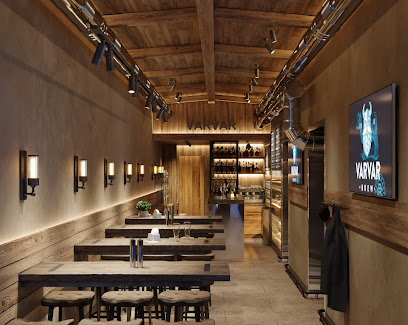
Zelda Bar
Discover the vibrant nightlife of Odesa at Zelda Bar, where exquisite drinks and delicious cuisine meet a lively atmosphere.
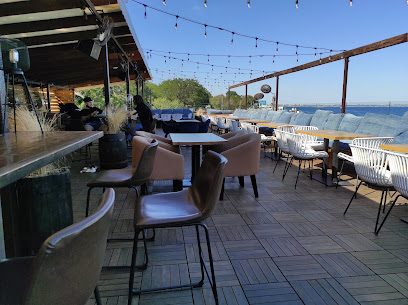
Queen Kyiv
Discover Queen Kyiv – where exquisite dining, vibrant live entertainment, and karaoke come together for an unforgettable night out.

Local Phrases about Black Sea Coast
-
- HelloПривіт
[pryvit] - GoodbyeДо побачення
[do pobachennya] - YesТак
[tak] - NoНі
[ni] - Please/You're welcomeБудь ласка
[budʲ laska] - Thank youДякую
[dyakuyu] - Excuse me/SorryВибачте
[vybachte] - How are you?Як справи?
[yak spravy?] - Fine. And you?Добре. А ви?
[dobre. A vy?] - Do you speak English?Ви говорите англійською?
[vy hovoryte anhliysʹkoyu?] - I don't understandЯ не розумію
[ya ne rozumiyu]
- HelloПривіт
-
- I'd like to see the menu, pleaseЯ б хотів подивитися меню, будь ласка
[ya b khotiv podvytysya menyoo, budʲ laska] - I don't eat meatЯ не їм м'ясо
[ya ne yim m'yaso] - Cheers!На здоров'я!
[na zdorov'ya] - I would like to pay, pleaseЯ би хотів розрахуватися, будь ласка
[ya bi khotiv rozrakhuvatysya, budʲ laska]
- I'd like to see the menu, pleaseЯ б хотів подивитися меню, будь ласка
-
- Help!Допоможіть!
[dopomozhitʲ!] - Go away!Піди геть!
[pidy hetʲ!] - Call the Police!Викличте поліцію!
[vyklychte politsiyu!] - Call a doctor!Викличте лікаря!
[vyklychte likarya!] - I'm lostЯ загубився
[ya zahubyvsya] - I'm illЯ хворий
[ya khvoryy]
- Help!Допоможіть!
-
- I'd like to buy...Я б хотів купити...
[ya b khotiv kupity...] - I'm just lookingЯ просто дивлюсь
[ya prosto dyvlyusʹ] - How much is it?Скільки це коштує?
[skilʲky tse koshtuye?] - That's too expensiveЦе занадто дорого
[tse zanadto doroho] - Can you lower the price?Чи можете ви знизити ціну?
[chy mozhete vy znyzyty tsinu?]
- I'd like to buy...Я б хотів купити...
-
- What time is it?Котра година?
[kotra hodyna?] - It's one o'clockОдна година
[odna hodyna] - Half past (10)Пів на одинадцяту
[piv na odynadtsyatu] - MorningРанок
[ranok] - AfternoonДень
[denʲ] - EveningВечір
[vechir] - YesterdayВчора
[vchora] - TodayСьогодні
[sohodni] - TomorrowЗавтра
[zavtra] - 1один
[odyn] - 2два
[dva] - 3три
[try] - 4чотири
[chotyry] - 5п'ять
[pyatʲ] - 6шість
[shistʲ] - 7сім
[sim] - 8вісім
[visim] - 9дев'ять
[devyatʲ] - 10десять
[desyatʲ]
- What time is it?Котра година?
-
- Where's a/the...?Де є...
[de ye...] - What's the address?Яка адреса?
[yaka adresa?] - Can you show me (on the map)?Чи можете ви мені показати (на мапі)?
[chy mozhete vy meni pokazaty (na mapi)?] - When's the next (bus)?Коли наступний (автобус)?
[koly nastupnyy (avtobus)?] - A ticket (to ....)Квиток (до ...)
[kvitok (do ...)]
- Where's a/the...?Де є...
History of Black Sea Coast
-
The Black Sea Coast of Ukraine was an area of significant Greek colonization starting in the 7th century BCE. Cities such as Olbia, Chersonesus, and Panticapaeum were established by Greek settlers, serving as major trade hubs and cultural centers. These colonies played a crucial role in the spread of Hellenistic culture and facilitated trade between the Greek world and the indigenous tribes of the region.
-
During the 1st century BCE, the Black Sea Coast fell under Roman influence, integrating into the broader Roman Empire. Fortified cities like Chersonesus were important military and trade outposts. Following the decline of the Roman Empire, the region became part of the Byzantine Empire, continuing to serve as a critical point for trade and military strategy until the early Middle Ages.
-
From the 7th to the 10th century, the Khazar Khaganate, a powerful Turkic state, controlled large portions of the Black Sea Coast. The Khazars played a significant role in regional politics, facilitating trade between the Byzantine Empire and the Islamic Caliphate. Their influence waned with the rise of the Kievan Rus and their eventual defeat by the emerging Rus state.
-
In the 13th and 14th centuries, the Republic of Genoa established a series of trading posts along the Black Sea Coast, including the prominent city of Caffa (modern-day Feodosia). These posts became vital centers for commerce, connecting Europe with the vast trade networks of the Mongol Empire and later the Ottoman Empire.
-
By the late 15th century, the Ottoman Empire had extended its control over the Black Sea Coast. The region remained under Ottoman rule for several centuries, contributing to the empire's strategic and economic interests. The cities along the coast were integrated into the complex trade network of the Ottoman Empire, facilitating the exchange of goods, culture, and ideas.
-
In the 18th century, the Russian Empire, under the rule of Catherine the Great, began expanding southward, eventually taking control of the Black Sea Coast of Ukraine. The foundation of cities like Odessa in 1794 marked a new era of Russian influence. The region was rapidly developed, becoming a crucial part of the Russian Empire’s economic and military strategy.
-
During World War II, the Black Sea Coast was a significant battleground, witnessing intense fighting between Axis and Soviet forces. Post-war, the region became part of the Ukrainian SSR within the Soviet Union. The Soviet period saw extensive industrialization and urban development, making the Black Sea Coast a vital part of the Soviet economy and a popular destination for Soviet citizens.
-
Following the dissolution of the Soviet Union in 1991, the Black Sea Coast became part of the newly independent Ukraine. The region has since developed a unique identity, blending its rich historical legacy with modern Ukrainian culture. Cities like Odessa and Sevastopol have become important cultural and economic centers in independent Ukraine.
Black Sea Coast Essentials
-
The Black Sea Coast in Ukraine is accessible via several major airports. The closest international airport is Odesa International Airport, which offers numerous direct flights from major European cities. Another option is Mykolaiv Airport, though it has fewer international connections. From Kyiv, Ukraine's capital, you can take a domestic flight to either Odesa or Mykolaiv. Alternatively, you can travel by train from Kyiv to Odesa, which takes around 7-9 hours. Buses are also available but may take longer.
-
Public transportation along the Black Sea Coast includes buses, minibuses (marshrutkas), and taxis. In cities like Odesa, public trams and trolleybuses are also available. Car rentals are another option for those looking to explore at their own pace. For coastal trips, ferries and boats offer scenic travel between certain points. Always agree on the fare before starting a taxi journey to avoid misunderstandings.
-
The official currency in Ukraine is the Ukrainian Hryvnia (UAH). Credit cards are widely accepted in cities like Odesa, but smaller towns and rural areas may require cash. ATMs are readily available in urban areas, but it’s advisable to carry some cash, especially for smaller purchases or in remote areas. Currency exchange services are available at airports, hotels, and banks.
-
The Black Sea Coast is generally safe for tourists, but it’s advisable to remain vigilant. Avoid poorly lit areas at night and be cautious in crowded places to prevent pickpocketing. Some neighborhoods in Odesa, like Moldavanka, have higher crime rates, so it's best to avoid them after dark. Always keep your belongings secure and stay aware of your surroundings.
-
In case of emergencies, dial 112 for police, fire, and medical services. Most cities along the Black Sea Coast have hospitals and medical facilities. It is strongly recommended to have travel insurance that covers medical emergencies. For minor health issues, pharmacies are widely available and many pharmacists can provide basic medical advice.
-
Fashion: Do dress modestly when visiting religious sites, covering shoulders and knees. Avoid flashy or overly revealing clothing. Religion: Do respect religious customs; for example, women should cover their heads when entering Orthodox churches. Public Transport: Do be respectful and offer your seat to elderly or disabled passengers. Don't speak loudly or disturb others. Greetings: Do greet people with a handshake; a smile and eye contact are appreciated. Eating & Drinking: Do try local foods and drinks; Odesa is known for its seafood. Don't refuse food or drink when offered, as it may be considered impolite.
-
To experience the Black Sea Coast like a local, visit local markets and try street food, especially in Odesa’s famous Privoz Market. Engage with locals, many of whom are friendly and willing to share stories about their culture and history. Attend local festivals and events to get a sense of the community spirit. Don't miss the chance to explore lesser-known beaches and natural reserves for a more authentic experience.
Trending Landmarks in Black Sea Coast
-
Potemkin Stairs
-
Golden Gate
-
Kiev Pechersk Lavra
-
Yalta, Naberezhnaya
-
Ukrainian Motherland Monument
-
Black Sea
-
Mirror Stream
-
St. Sophia's Cathedral
-
Gorodetsky House
-
Bohdan Khmelnytsky Monument
-
Chorne Sea
-
Odesa Museum of Western and Eastern Art
-
Rozumovskyi Palace
-
Independence Monument
-
Danube Biosphere Reserve
Nearby Cities to Black Sea Coast
-
Things To Do in Kryvyi Rih
-
Things To Do in Kropyvnytskyi
-
Things To Do in Zaporozhye
-
Things To Do in Zaporizhzhia
-
Things To Do in Kremenchuk
-
Things To Do in Simferopol
-
Things To Do in Tiraspol
-
Things To Do in Sevastopol
-
Things To Do in Cherkasy
-
Things To Do in Poltava
-
Things To Do in Chișinău
-
Things To Do in Orhei
-
Things To Do in Kerch
-
Things To Do in Mariupol
-
Things To Do in Donetsk













